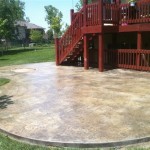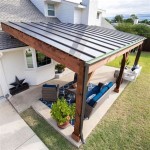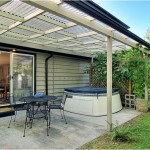Outdoor Flagstone Patio Ideas For Beginners in Atlanta, Georgia
Creating an outdoor flagstone patio can significantly enhance the aesthetic appeal and functionality of a property. In Atlanta, Georgia, where the climate allows for extended outdoor enjoyment, a flagstone patio provides an ideal space for relaxation, entertainment, and al fresco dining. This article offers a comprehensive guide for beginners interested in designing and installing a flagstone patio, focusing on key considerations specific to the Atlanta area.
Flagstone patios are favored for their natural beauty, durability, and versatility. The irregular shapes and varying colors of flagstone create a unique and organic look that complements the surrounding landscape. Proper planning and execution are essential to ensure a successful and long-lasting patio. This includes understanding the local soil conditions, selecting appropriate materials, and following established installation techniques.
Key Considerations for Atlanta's Climate and Soil
Atlanta's climate is characterized by hot, humid summers and mild winters. These conditions can affect the performance of a flagstone patio. The freeze-thaw cycle, while not as severe as in northern climates, can still cause movement and shifting of the stones over time. Properly preparing the base layer is crucial to prevent this issue. Additionally, the high humidity can promote the growth of moss and algae on the flagstone surface. Selecting a sealant that provides protection against moisture and UV exposure is important to maintain the patio's appearance and prevent deterioration.
The soil composition in Atlanta is typically clay-based, which can present challenges for drainage. Clay soil retains water, which can lead to heaving and cracking of the patio surface. It is essential to ensure adequate drainage by creating a well-compacted gravel base and installing a drainage system if necessary. This will help to prevent water accumulation beneath the flagstone and minimize the risk of damage. Consult with local landscaping professionals to assess the specific soil conditions of the property and recommend appropriate drainage solutions.
Selecting the Right Flagstone and Materials
Choosing the right type of flagstone is a crucial step in creating a successful patio. Several types of flagstone are available, each with its own unique characteristics and aesthetic appeal. Common options include sandstone, slate, limestone, and quartzite. Sandstone is a popular choice for its durability and warm, earthy tones. Slate offers a smooth, even surface and a range of colors from gray to black. Limestone is a softer stone that is easy to work with and provides a classic look. Quartzite is known for its exceptional strength and resistance to weathering.
When selecting flagstone, consider the overall design aesthetic and the intended use of the patio. For high-traffic areas, choose a durable and slip-resistant stone. Also, consider the color and texture of the surrounding landscape. A lighter-colored flagstone can brighten up a shady area, while a darker stone can create a more intimate and cozy atmosphere. Source flagstone from reputable suppliers who offer high-quality materials that are suitable for outdoor use.
In addition to flagstone, other essential materials include gravel for the base layer, sand for setting the stones, and polymeric sand or mortar for filling the joints. Gravel provides a stable and well-draining foundation for the patio. Sand cushions the flagstone and allows for minor adjustments during installation. Polymeric sand is a mixture of sand and polymers that hardens when exposed to water, creating a durable and weed-resistant joint. Mortar is a traditional option for filling the joints, providing a permanent and long-lasting solution.
For the base layer, crushed granite or gravel is recommended in Atlanta’s climate. This material provides good drainage and compaction, essential for dealing with the clay soil. Proper compaction of this base layer is crucial for preventing settling and shifting of the flagstone over time.
Step-by-Step Installation Guide
Installing a flagstone patio is a labor-intensive process that requires careful planning and execution. However, with the right tools and techniques, it is a manageable project for beginners. The following step-by-step guide provides a general overview of the installation process.
Step 1: Planning and Design. Before beginning the installation, create a detailed plan for the patio. Determine the size and shape of the patio, and mark the area with stakes and string. Consider the location of existing utilities, such as gas lines, water lines, and electrical cables. Obtain any necessary permits from the local authorities. Sketch the layout of the flagstone, taking into account the natural shapes and sizes of the stones. This will help to minimize waste and ensure a visually appealing design.
Step 2: Excavation and Base Preparation. Excavate the area to a depth of approximately 6-8 inches. This will allow for the gravel base and the sand setting bed. Ensure that the excavated area is level and compact the soil using a plate compactor. This will create a stable foundation for the patio. Install a weed barrier fabric to prevent weeds from growing through the joints of the flagstone.
Step 3: Installing the Gravel Base. Add a layer of gravel to a depth of 4-6 inches. Use a plate compactor to compact the gravel in layers of 2-3 inches. This will create a solid and well-draining base for the patio. Ensure that the gravel base is level and slopes slightly away from the house to promote water runoff.
Step 4: Laying the Sand Setting Bed. Add a layer of sand to a depth of 1-2 inches. Use a screed board to level the sand bed, creating a smooth and even surface for setting the flagstone. The sand bed should be slightly damp to improve compaction and stability.
Step 5: Setting the Flagstone. Begin laying the flagstone according to the planned layout. Start in a corner or along a straight edge and work outwards. Use a rubber mallet to gently tap the flagstone into place, ensuring that it is level and flush with the surrounding stones. Leave a gap of approximately 1-3 inches between the stones for the joint filler. Use a level to check the alignment of the flagstone and make adjustments as needed.
Step 6: Filling the Joints. Once the flagstone is set, fill the joints with polymeric sand or mortar. For polymeric sand, sweep the sand into the joints and compact it using a brush. Use a fine spray of water to activate the polymers and allow the sand to harden. For mortar, mix the mortar according to the manufacturer's instructions and apply it to the joints using a trowel. Smooth the mortar and remove any excess. Allow the mortar to cure for several days before using the patio.
Step 7: Sealing and Maintenance. After the patio is installed, apply a sealant to protect the flagstone from moisture, stains, and UV damage. Choose a sealant that is specifically designed for outdoor use and follow the manufacturer's instructions. Regularly clean the patio with a brush and mild detergent to remove dirt and debris. Remove any weeds that grow in the joints. Inspect the patio for cracks or damage and make repairs as needed.
Design Ideas and Aesthetic Considerations
The design of a flagstone patio should complement the existing landscape and architectural style of the property. Consider integrating the patio with other outdoor features, such as gardens, walkways, and water features. Incorporate seating areas, fire pits, and outdoor kitchens to create a functional and inviting space.
When selecting flagstone, consider the color and texture of the surrounding landscape. A lighter-colored flagstone can brighten up a shady area, while a darker stone can create a more intimate and cozy atmosphere. Use different sizes and shapes of flagstone to create a visually interesting pattern. Consider incorporating decorative elements, such as pebbles, gravel, or plants, to enhance the aesthetic appeal of the patio.
In Atlanta, using native plants around the flagstone patio can enhance the natural aesthetic and require less maintenance. Azaleas, dogwoods, and hydrangeas thrive in Atlanta's climate and can provide beautiful blooms and greenery. Consider incorporating these plants into the landscaping surrounding the patio to create a cohesive and visually appealing outdoor space. Additionally, drought-tolerant groundcovers like creeping thyme can be planted between the flagstones to soften the edges and add a touch of greenery.
Lighting plays a crucial role in creating the desired ambiance for an outdoor patio. Low-voltage landscape lighting can be used to illuminate the patio and surrounding areas, enhancing safety and creating a warm and inviting atmosphere. Consider using path lights to illuminate walkways, spotlights to highlight architectural features, and string lights to create a festive mood. Proper lighting can extend the usability of the patio into the evening hours and enhance the overall enjoyment of the outdoor space.
Furniture selection is also an important consideration. Choose outdoor furniture that is durable, weather-resistant, and comfortable. Consider the size and style of the patio when selecting furniture. A large patio can accommodate a dining table, lounge chairs, and a sofa, while a smaller patio may only have room for a few chairs and a small table. Choose furniture that complements the overall design aesthetic of the patio and creates a comfortable and inviting space for relaxation and entertainment.
Adding a fire pit to a flagstone patio can create a focal point and provide warmth and ambiance during cooler evenings. Fire pits can be constructed from stone, brick, or metal and can be fueled by wood, propane, or natural gas. Consider the size and location of the fire pit when planning the patio design. Ensure that the fire pit is located at a safe distance from the house and other structures and that it complies with local fire codes. A fire pit can transform a patio into a cozy and inviting outdoor living space.

Flagstone Patio Ideas To Elevate Your Outdoor Space Oasis Landscapes Irrigation

8 Ways To Use Flagstone In Your Landscaping Lawnstarter

Flagstone Patio Ideas To Elevate Your Outdoor Space Oasis Landscapes Irrigation

Flagstone Patio Ideas To Elevate Your Outdoor Space Oasis Landscapes Irrigation

Flagstone Patio Ideas To Elevate Your Outdoor Space Oasis Landscapes Irrigation

Vision Hardscapes Of Atlanta Inc Updated July 2025 Acworth Georgia Landscaping Phone Number Yelp

Get The Perfect Look For Your Backyard Strategies Patio Design Infantry Landscaping Atlanta Ga

Fayetteville Ga Paver Patios Peachtree City Patio Company Atlanta

Sandy Springs Ga Backyard Transformation Arnold Masonry

Sandy Springs Ga Backyard Transformation Arnold Masonry
Related Posts








